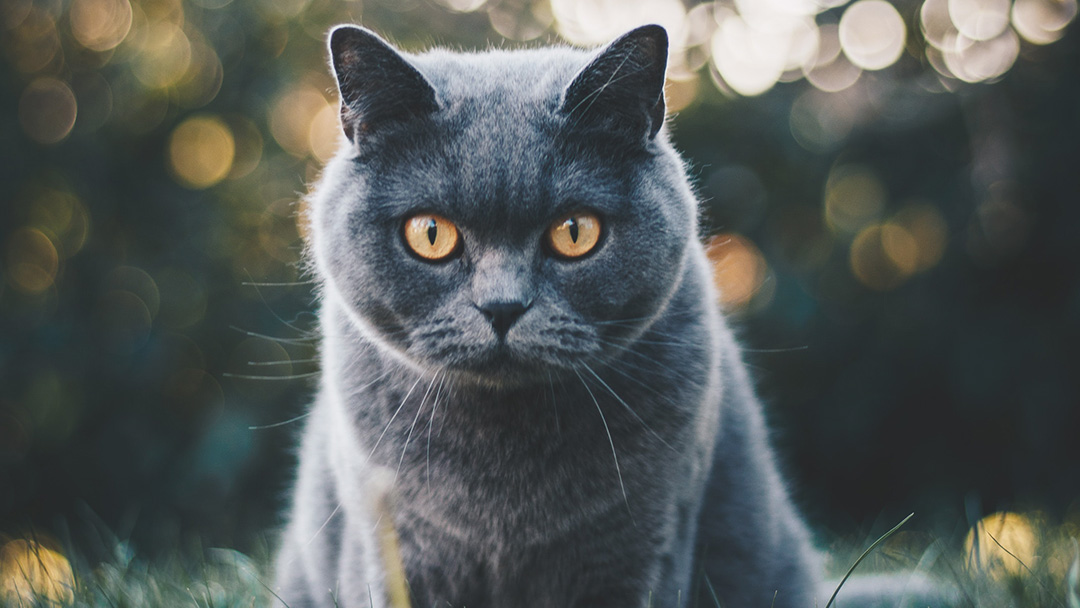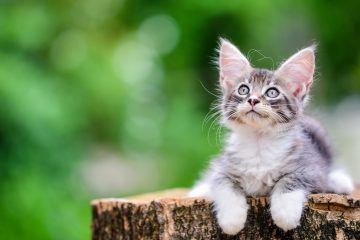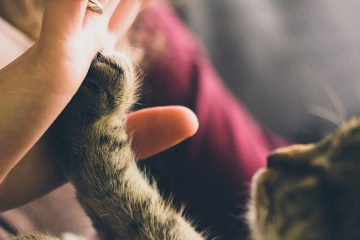Domestication of the cat or smart auto domestication.
The predecessors of your domestic cats (felis catus) trolled around 9 Million years ago. They moved from Asia to Europe and Africa. During evolution several species developed in parallel – our cats descend partly from the European wildcat (Felis silvestris silvestris) and the African wildcat (Felis silvestris lybica). The genetical influence of Felis silvestris lybica is the most important – she is the mother of all domestic cats today. Yes, your Garfield at home is the son of this elegant creature.
The team of the genetic Carlos Driscoll from the University of Oxford has analysed the genes of 1000 cats from 5 continents and concluded that all genetic lines mainly descend from Felis Silvestris Lybica, the African Wildcat. So it was a long process to the domestication of the cat.
Why have cats approached humans? All for Food
Probably the cat approached humans when these settled down, about 12.000 years ago during the Neolithic era. Agriculture and storing started and cats found prey easily and waste to nourish on close to humans. This happened in the Asian part of the Mediterranean Sea up to Iran, the so called Fertile Crescent (see Wikipedia).
Kitty-cat, the cat conquers its first hearts
The first proof that a cat has conquered a special position in a person´s life is an archaeological fund made in Cyprus. The ca 9500 years old grave contains bones of a human and a cat, both buried at a distance of only 40 cm. The bones of the cat do not show injuries but it may be possible that the animal had been killed to be buried with the human. An interesting fact is that there were no wild cats in Cyprus at that time, the cat was imported. (Leyhausen)
There are more similar funds in Mesopotamia, southeast Anatolia and Jordanian all around 9000 BC. It seems that some cats conquered the hearts of people quite early.
The cat becomes divine – Egypt
No doubt the best environment for cats was Egypt. Agriculture and the mild climate attracted vermin, rats and mice. Cats did a great job of chasing vermin and the Egyptians thanked the elegant creatures with a lot of sympathy and a divine status.
Cats were the totem of the goddess Bastet and all female sun-goddesses. Illustration of the goddesses Bastet and Sachmet in several graves show them with a cat-head. And the first pictures of cats and humans together date from the 5. Dynasty (ca. 2600 B.C.).
The cat was still the wild Felis silvestris lybica living around the farm and house. It was the beginning of living together but we are still far away from domestication.
Domestication of the cat or abuse as a sacrifice?
Herodot, the antique historian, reports about Egypt, that when a cat dies the members of a household grieved for the cat, shaved their eyebrows and dressed in mourning. The cat got embalmed and buried in a special cemetery for cats e.g. Bubastis (Herodot: Historien, part 2).
Embalmed cat mommies had been found in graves of high officials, the cats got killed after their owner´s death and were supposed to accompany them to the after world.
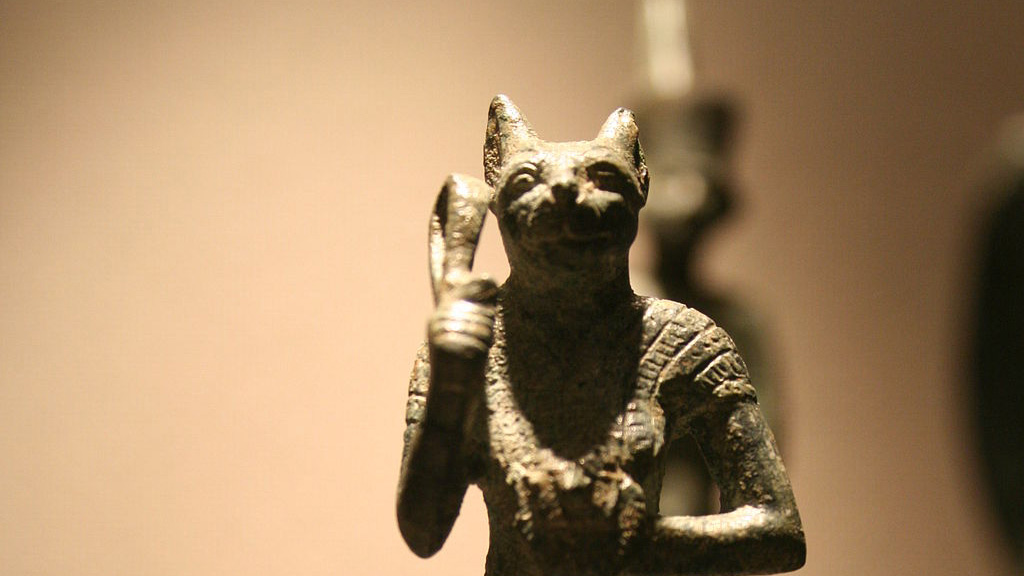
CC BY-SA 3.0 Einsamer Schütze
It was not all easy in Egypt. Having a closer view of the situation of cats in ancient Egypt, cats lived on one side well fed and with a divine status, on the other site they were bred to be killed, embalmed and scarified. Jores gives further information on this topic in her essay (Jores).
Egyptian cats in the religious context
The author Jores explains very well the situation of cats in Antique Egypt.
Egyptian cults divided between temple animals – those cats living in the interior of a temple and were adored as Gods with their own priest caring for them. They had fellows living in the area of the temple, considered untouchable. They got well-fed as well. In case a temple cat passed away a fellow-cat followed on its position and became temple – cat. Talisman animals lived in houses as hunters and pets but with the intention of pleasing the Gods. The cats got embalmed and buried after their death but in case their owner passed away earlier, the situation changed, as they had the honour to accompany him. Bastet, Goddess of fertility, Love, Joy and Dance got rendered by scarified cats. The cats got bred to be killed and embalmed. Their mummies got sold to render Bastet.
Beside the ritual context most of the cats lived as busy mice hunters at the countryside close to the humans but they managed to maintain their wild character (as they were still wild cats of felis silvestris lybica).
The cat in antique Europe
Antique Greeks and Roman were bewildered by the idea to adore a God with n animal figure and their mouse-hunters were ferrets. Very well, as the export of cats was forbidden. Anyway, some Phoenician merchants brought cats to Italy, France and Brittany as we have several archaeological discoveries (Wikipedia).
Between the 1st and 3rd century AC, cats spread all around the Roman Empire, there were discoveries in Hildesheim – Bavenstedt in Germany from 200 – 400 A.C. and Wiesbaden-Biebrich 500 A.C. (Wikipedia).
Cats go Far East
Cats formed part of the religious ceremonies in India. From there they continued to China and Japan. Around 1500 B.C. cats protected the cocoons of the silkworms in China and calligraphies in Japan from mice and rats.
Chinese people of this period were convinced that just humans and cats have souls. Cats still symbolize luck and a long life in East Asian Cultures. They were the status symbol of the happy few. From the Tang period we know about a document showing a special relationship between a cat and a human. An advertisement informs: that a cat ran away from the house of Yü Ta Po, the name of the cat is “Snowgirl”, Hsü Hsüan.
A writer of the same period tells about the love of a man for his cat: He did not want to burry it after its death and kept the cadaver for days in his house until the cadaver started to putrefy. (Wikipedia, 2017)
Hard times for individualists – The Middle Age
At the beginning everything started well: in the 10th century cats were popular on the whole European continent and in Asia. They were still rare and expensive in England, where they mostly lived at the courts surrounded by nobles as mice hunters and pets.
As for the law of the Prince of Southwales dated 940 A.C., a group of houses just can declare themselves a Village when they have 9 buildings, a plow, a kiln, a churn, a rooster, a bull, a shepherd and a cat. (Wikepedia)
Cats were appreciated, according to the Sachsenspiegel (a lawbook dated 1220–1230 A.C.), the compensation for a cat amounted to 3 shillings, for a lamb or a cow 4 shillings, Kitty was an expensive animal. (Wikipedia)
Increasing commerce in Europe did not just exchange goods but vermin as well, cats did a good job to balance this. As a consequence the cat population increased during this time.
Nevertheless, life in the late middle ages became complicated: During the increase of Inquisition in the later middle ages cats got condemned with all free spirits and frequently got tortured and killed in fire with their owners.
The cat as symbol of the pagan Goddess Freya
For the Catholic church cats symbolised evil due the percieved idea of their elegant beauty, their fierce independence, and their double-life of a sweet and innocent kitty during the day and a hunter temptress at night. (Jores). Even worse that cats belong to the Germanium Goddess Freya (Goddess of Beauty, Love and domestic virtues). Her chariot is pulled by wild cats. Freya had still been an important reference for women in the Middle Ages. Trying of oppress pagan ideas, the church condemned not just the abstract Freya but also her real companions and persecuted cats. (Rödder & Pfleiderer, 2004).
Unfortunately, some of these weird ideas and prejudices against cats still go on.
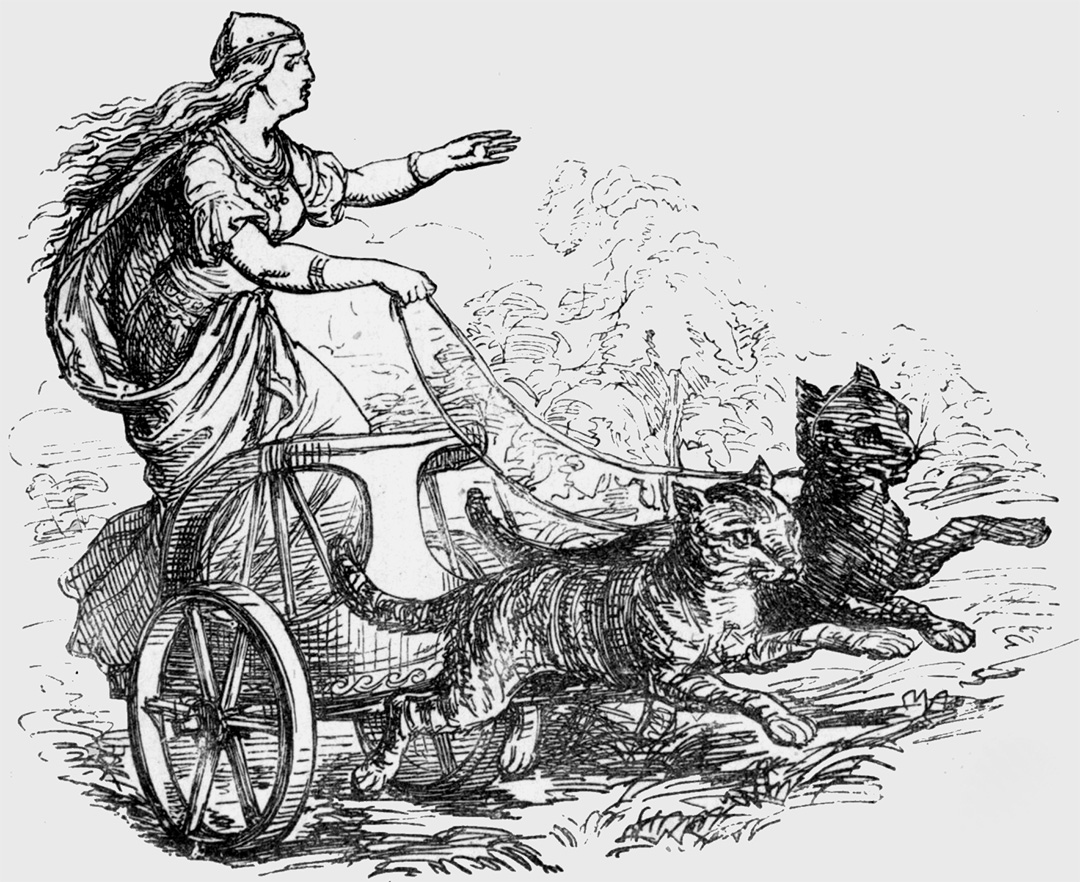
During the inquisition the cat population in Europe decreased. Some authors say, that nature took revenge, the amount of vermin increased and this contributed to the spread of the big diseases of the late Middle Ages. (Rödder & Pfleiderer, 2004).
But there were still some cat-friends among the whole population who kept their hearts and houses open to cats.
Nevertheless the relationship between humans and cats was still practical. Exotic breeds arrived in the company of travellers or merchants from faraway regions ( eg. Angora, Siam). Any crossbreeding with locals was pure passion and not active breeding.
Cats go West – Kitty in the New World
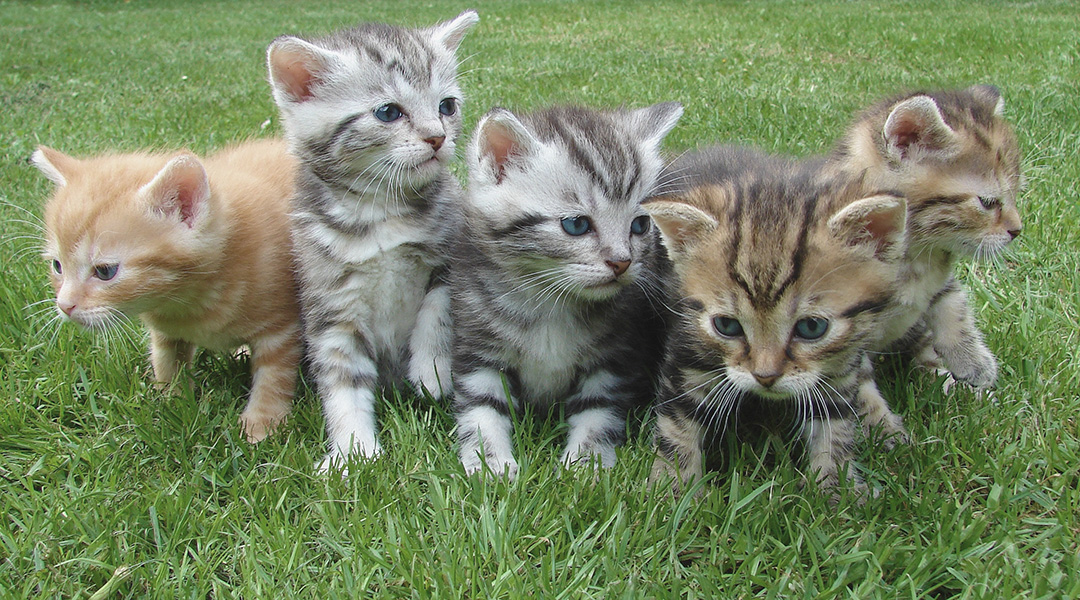
Between the 15-18th century cats were carried by boat by the European conquerors to North America, Australia and New Zealand. Cats on Board was a tradition since the Egyptian era (as far as someone could smuggle a pair out of Egypt). They protected the merchant goods from vermin and for sure were companions for the crew (Wikipedia, 2017).
They were very warmly welcomed in North America, as the population struggled against vermin. Gay Cooper mentions a load of 100 cats sent to San Francisco, they were bought for 10 cents each in Europe and sold in San Francisco for 20 Dollars each!
Finally the cat becomes domesticated – or not?
During the industrial revolution, the status of the cat changed from mice hunter to pet. Until then the cat self-domesticated itself. In contrast to other farm animals, the human has domesticated (horse, dog etc) and genetically modified by breeding, the cat had still preserved its wild origin. It approached mankind because there was something to fetch.
At the end of the 19th century the situation had changed. Catfriends organized the first public exposition of cats, in 1871 in London, followed by more in Belgium and the US. Today the Deutscher Edelkatzenzüchterverband (German association of cat-breeders) recognizes 50 different races of cats.
Indomitable beauty – domestication reverse
Nevertheless, cats remain fascinating. They are the most popular pet and an important economical factor. But they are not necessarily attached to humans and there is an inverse tendency in Australia, New Zealand and some islands. Abandoned cats have become wild again and now their descendants are completely independent. Wild Australian ex-domestic cats have shown strong adaption to their new environment. They are bigger, more muscular and have even changed the colour of their fur as to their surroundings. They chase rabbits (also imported to Australia) and little local animals as well. (Wikipedia 2017)
Sources:
Discoll, Carlos A. u.a.: The near eastern origin of cat domestication. Science Band 317 vom 27. Juli 2007, S.519–523
Herodot: Historien. Deutsche Gesamtausgabe, übers. von A. Horneffer, hrsg. von Hans Wilhelm Haussig. 4. Auflage, Alfred Kröner, Stuttgart 1971, ISBN 3-520-22404-6, S. 128 f
Jores, Nicola Lesley: Zur Kulturgeschichte der Hauskatze unter besonderer Berücksichtigung ihrer Erkrankungen, Diss. FH Berlin 2004, http://www.diss.fu-berlin.de/diss/receive/FUDISS_thesis_000000001518
Leyhausen, Paul /Pfleiderer, Mircea: Katzenseelen, Stuttgart 1996, ISBN-3-440-05843-3
Jaromir, Malek: The Cat in Ancient Egypt. London 1993, ISBN 0-7141-0969-X, S. 133
Rödder, Birgit / Pfleiderer, Mircea: Was Katzen wirklich wollen, Gräfe und Unzer, 2014, ISBN-10: 3833839457
Lothar Störk, in: Lexikon der Ägyptologie III. Stichwort Katze. Otto Harrassowitz Verlag Wiesbaden 1980, S. 367–368.
Vigne, Jean Denis, u.a.: Early Taming of the Cat in Cyprus, Science Ed. 304, S. 259, http://science.sciencemag.org/content/304/5668/259
Wikipedia: https://de.wikipedia.org/wiki/Hauskatze
Sin embargo, el gato sigue siendo una criatura polifacética. Aunque es la mascota más popular del mundo y también un factor económico importante. Pero no está necesariamente vinculado a los humanos y hay una tendencia opuesta fuera de Europa:
En Australia, Nueva Zelanda y en muchas islas, algunos gatos se volvieron feral y son tan salvajes que ya no tienen ninguna relación con los humanos. En Australia se observa como algunos gatos que eran domésticos se han vuelto feral viviendo lejos del hombre. Han pasado por una adaptación significativa a su nuevo entorno. Se han vuelto más grandes y más musculosos y desarrollan coloraciones de pelaje distintos para el camuflaje local. Estos gatos viven principalmente de conejos introducidos en Australia, pero también de animales nativos. (Wikipedia, 2017)


